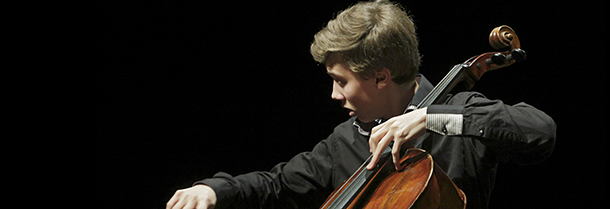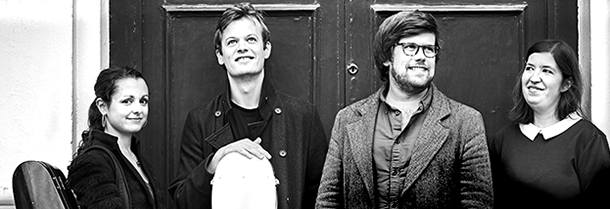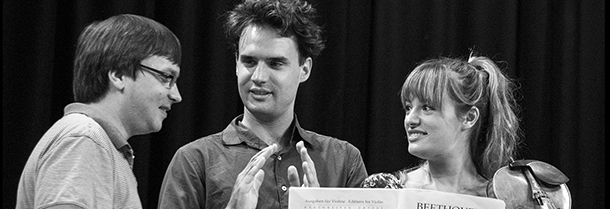Tag: debut
-

PROGRAM NOTES: JONATHAN ROOZEMAN
Luigi Boccherini Sonata in A major G 4 Luigi Boccherini was perhaps the greatest cellist of the 18th century, and like his compatriot of a previous generation, Domenico Scarlatti, he spent the most active portion of his professional life at the court of Spain. His royal patron, the Spanish Infante Don Luis Antonio, younger brother…
-

PROGRAM NOTES: CASTALIAN STRING QUARTET
Franz Joseph Haydn String Quartet in D, Op. 76 No. 5 Having recently returned from his hugely successful visits to England and been liberated from financial woes, Haydn composed a set of six String Quartets, Op. 76 which were commissioned by Hungarian Count, Joseph Erdödy in 1797. Deviating from more traditional forms and establishing a…
-

PROGRAM NOTES: BENEDETTI ELSCHENBROICH GRYNYUK TRIO
Franz Schubert Adagio from Piano Trio in E at Major Op. 148 D 897 Schubert’s Adagio for Piano Trio D 897 was composed in 1827 but only published decades later, under the publisher’s title Notturno. And indeed, the opening section does conjure up images of nighttime serenity, with its heavenly texture of harp-like arpeggios in…
-

PROGRAM NOTES: SCHAGHAJEGH NOSRATI
Johann Sebastian Bach GOLDBERG VARIATIONS BWV 988 Historical Background Such was Bach’s mastery of his musical materials that he was often tempted to explore a particular genre or compositional technique in a systematic way by providing a quasi-exhaustive compendium of its possibilities. Fugue, for example, is represented in the two books of The Well-Tempered Clavier…
-

PROGRAM NOTES: SHEKU KANNEH-MASON & ISATA KANNEH-MASON
Gaspar Cassadó Suite for Solo Cello Gaspar Cassadó is hardly a household name, but he was one of the great cellists of the twentieth century, active as a performer, composer and transcriber for his instrument. Born in Barcelona in 1897, he was discovered at the age of nine by a young Catalan cellist just starting…
-

PROGRAM NOTES: ZHANG ZUO
Ludwig van Beethoven 32 Variations in C minor WoO 80 The theme that Beethoven chose for his 32 Variations in C minor (1806) has a Baroque feel to it, with its chaconne-like harmonic pattern in the left hand and sarabande-like second-beat emphasis in the right. This theme, however, is far from the characterless blank canvas…


